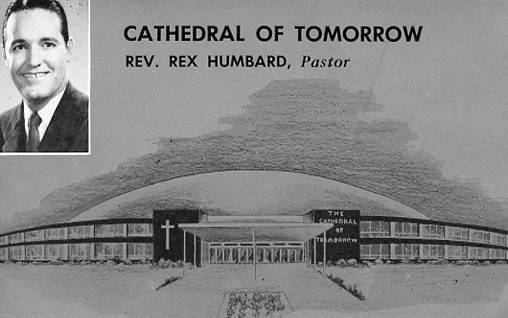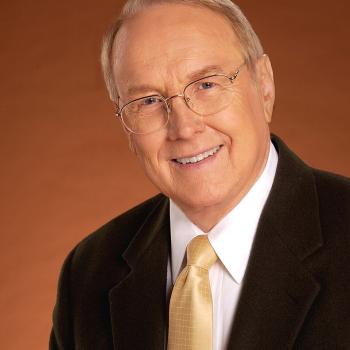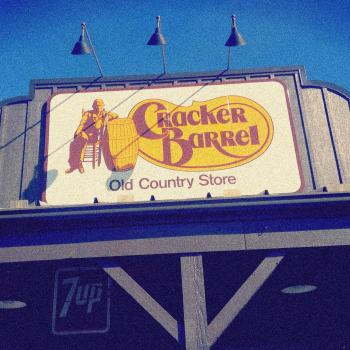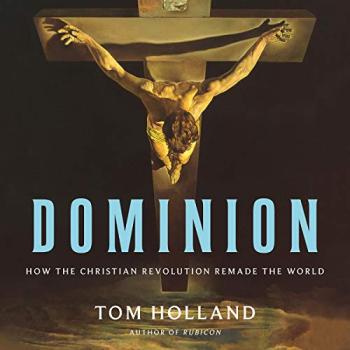“Evangelical,” the director of the Southern Baptist Convention’s Christian Liberty Commission said in 1976, was a “Yankee word” that did not apply to Southern Baptists.
Today, of course, the situation is vastly different, with many northern evangelicals who don’t see eye-to-eye with the Southern Baptist Convention viewing “evangelical” as a southern word that doesn’t accurately describe their own views. There is no question that the evangelical movement has been southernized and rebranded during the past 45 years. This leads to the question: Now that Southern Baptists have come to dominate the politics, culture, and theology of an evangelical movement that was once largely the creation of northerners, what will happen to the northern evangelical institutions that initially launched the movement in the mid-20th century? Will they remain “evangelical”? And will they even survive?

To those who haven’t read the scholarship of George Marsden, Joel Carpenter, and other historians who have chronicled the creation of a new evangelical movement in the 1940s that developed out of northern fundamentalism, the idea that northern Protestants defined American evangelicalism from the 1940s through the late 1970s might come as a surprise. But a quick look at the location of the 20th-century institutions that bore the evangelical label will confirm this. The National Association of Evangelicals was a northern creation that was founded in the city of Chicago and led initially by a Boston pastor, and it appealed largely to northerners. The movement’s leading magazine, Christianity Today, was likewise headquartered in northern Illinois, and it was edited for years by a Northern Baptist who grew up on the outskirts of New York City and earned his Ph.D. from Boston University. Northern Illinois (along with Grand Rapids, Michigan) was also the center of the evangelical publishing industry, with Intervarsity Press, Crossway, and Tyndale located only a few miles away (at most) from Chicago public transit lines. The movement’s most prestigious colleges and seminaries were mostly northern or western: Wheaton, Calvin, Gordon-Conwell, Moody Bible Institute, Fuller, Biola, and Trinity Evangelical Divinity School, among others. In short, American evangelicalism of the mid-1970s appeared to be a movement whose center was in the Chicago suburbs, with important outposts in southern California and Grand Rapids, Michigan, and maybe a small historic core in Boston. And as a result, it reflected its moderately conservative midwestern and northeastern heritage on questions of race, politics, and gender.
Most of the intellectual centers of northern evangelicalism still exist, but after the Southern Baptist Convention’s conservative takeover in 1979, the SBC began identifying itself as evangelical and the geographic center of evangelicalism shifted to the South – as did its politics. In fact, there were hints of this even before the late 1970s. The success of Billy Graham’s Sunbelt crusades in the mid-20th century, the rapid growth of megachurches in southern cities and suburbs, and the national visibility of “born-again” Christianity after Jimmy Carter used the term in 1976 all portended an evangelical resurgence that would be centered in Sunbelt suburbia, not the declining frost belt.
But there were tensions in this sudden merger between a born-again southern Christianity that was dominated by the Southern Baptist Convention and a northern evangelical movement that had formed as a splinter group from northern mainline Protestantism. To be sure, there were plenty of southern-style evangelical churches in the North, and they did not consider the merger objectionable at all. For instance, Rex Humbard, one of the North’s most successful televangelists of the mid-20th century, built his Cathedral of Tomorrow in a suburb of Akron, Ohio, primarily by appealing to southern migrants who had traveled north to work in Akron’s rubber industry, and he offered them a southern-style gospel that might have been equally at home in Nashville.

There were plenty of Southern Baptist churches in Ohio, New York, and Illinois. Likewise, Christianity Today magazine had several southerners on the editorial staff. But despite the presence of a number of southern transplants in northern evangelical circles, there were still profound cultural and political differences between the fiscally conservative, moderately racially egalitarian midwestern and northeastern Republicans who headed the NAE, Wheaton College, and Fuller Theological Seminary, and southern conservative Baptists like Baptist pastor W. A. Criswell and Moral Majority founder Jerry Falwell Sr., who had been vocal defenders of racial segregation in the 1950s – the decade when the NAE passed a resolution calling for civil rights legislation that would guarantee equal rights in education and housing.
But beyond the difference in overt views of race, there was a difference over southern nationalism. Many Baptists in the South were ecstatic when the Democratic presidential nomination of 1976 went to a fellow Southern Baptist whose “initials are the same as our Lord’s,” as Oklahoma Baptist pastor (and future SBC president) Bailey Smith reminded others in his denomination. Many northern evangelicals who had always voted Republican did not share Smith’s excitement. When evangelicals went to the polls in 1976, during what Newsweek magazine called the “year of the evangelical,” they split their votes along regional lines. Southern evangelicals – especially southern evangelicals in rural areas – voted for Jimmy Carter, but northern evangelicals generally preferred Gerald Ford. In the end, the evangelical vote was divided almost exactly evenly, partly because at the time, northern evangelicals still held enough influence in the movement to counterbalance their southern counterparts.

At the time, northern evangelicals were generally more worried than most Southern Baptists about the cultural direction of the nation. Unlike most Baptists in the South, they lived in areas where churchgoing Protestants were a minority of the population, and evangelicals an even smaller contingent. Their states were in the forefront of battles over abortion and the sexual revolution, and as a result, they were the first conservative Protestants in the nation to mobilize against these issues. Many of them were excited by Francis Schaeffer’s call to cultural engagement. Thus, when Jerry Falwell, Pat Robertson, and other southern pastors began urging southern Protestants to join the Republican Party to fight against moral licentiousness and preserve America’s Christian identity, it looked at first glance as though Southern Baptists were joining the political campaigns of the northern evangelicals – not the other way around. After all, the NAE and Christianity Today had condemned Roe v. Wade as soon as it was issued, but the SBC had waited a full seven years to do so. And the evangelicals who led Wheaton College and other northern evangelical institutions had always been Republican; it was the Southern Baptists who were newcomers to the party.
But the politics of the Moral Majority were not a perfect fit for northern evangelicals – though they did not immediately sense this. Christianity Today magazine and the NAE tried to steer a more centrist political course in the late 20th century, condemning abortion but at the same time distancing themselves from Falwell’s full-throated endorsement of the Reagan administration’s nuclear arms buildup. Nevertheless, it was not until the 21st century that a full political rupture between the northern evangelical intellectual movement and conservative southern evangelicals seemed imminent.
It was in the first decade of the 21st century that a majority of college-educated and graduate-school-educated Americans first began voting Democratic – and also when nearly all of the last northeastern states that had been sending Republicans to Congress shifted firmly and irrevocably into the Democratic column. Many mainline Protestant ministers in the North insisted that the Iraq War and the unequally distributed tax cuts of the George W. Bush administration were moral issues on which Christians had to take a stand. Some progressive evangelicals (many of whom were located in the North) considered these arguments and wondered whether they could continue to support the Republican Party, despite their belief in its platform statements on abortion. When a young Democratic state senator from Illinois who was deeply shaped by his own Chicago-area Protestant church experience appeared poised to become the first African American president in history, some of the leaders in the North’s evangelical institutions found his candidacy appealing. Richard Cizik, a vice president of the NAE and a leading voice for environmental justice through “creation care,” supported Obama and suggested that many young evangelicals would probably do the same. “The GOP is no longer God’s Own Party,” Cizik declared in February 2008. The votes of up to 40 percent of evangelicals were “up for grabs.”

Despite Cizik’s prediction, white evangelical support for the GOP did not significantly decrease. Seventy-three percent of white evangelical voters supported the Republican ticket in 2008, 79 percent did so in 2012, and 81 percent did so in 2016, when Donald Trump was on the ballot. Some evangelical thought leaders in the North were aghast – but their incredulity was a sign of how marginalized their wing of the movement had become in the vast sea of Sunbelt evangelicalism and how out of touch they were with the prevailing cultural trends among conservative Protestants.
“This election, I didn’t personally know any evangelicals who were vocally supporting Trump,” Christianity Today’s managing editor Katelyn Beaty, a graduate of Calvin University, wrote in November 2016. “Many of us were troubled by the other candidate, to be sure. But, as so many wise evangelical leaders had noted, electing Trump would seriously harm our already fragile democracy and undo the church’s witness, and I believed the white evangelical community would take heed.”
The fact that the managing editor of Christianity Today could say that she did not “personally know any evangelicals who were vocally supporting Trump” in an election in which Trump received 81 percent of the white evangelical vote was an indication of how far removed the northern evangelical intellectual world was becoming from the evangelical voters in other parts of the country – especially the South. That gap continued to grow over the next four years. In defiance of southern conservative politics where the Second Amendment is treated as sacrosanct, Christianity Today issued editorials supporting gun restrictions. The magazine repeatedly published articles advocating for the rights and human dignity of undocumented immigrants. Then, in late 2019, Christianity Today’s editor-in-chief Mark Galli wrote what may have been the magazine’s most politically charged editorial in decades: a piece publicly outlining the case for President Trump’s impeachment and removal from office. It was clear that the magazine’s editorial staff were not going to support the Republican ticket in 2020.
Other northern evangelical institutions experienced a similar political shift. A Wheaton College student newspaper poll showed Joe Biden with an 8-point lead over Trump among Wheaton students immediately before the 2020 presidential election. No poll was taken of the faculty, but the gap was likely even wider. As late as 2016, polling did not show a significant difference between the voting preferences of college-educated evangelicals and evangelicals who lacked a college degree, but in 2020, there was a 13-point gap between the two groups, as college-educated evangelicals began to break with the Democratic Party. As the Wheaton College faculty director of the college’s Center for Faith, Politics and Economics, Trump’s actions on race and other related matters meant “there’s going to be some soul searching” for people who disagreed with Trump on “90 percent of the issues” even if they agreed with his stance on abortion.
But 80 percent of white evangelical voters once again supported Trump in 2020, and the next year, the Southern Baptist Convention narrowly avoided an even further lurch to the right over culture war issues that were not flashpoints for most of the northern evangelical institutions that had once been leaders in the movement. Clearly, the northern evangelical intellectual centers where Trump was anathema were not representative of the evangelical electorate as a whole. Nor was their stance on matters of church doctrine as representative of the movement as it once had been.
For instance, many northern evangelical intellectual institutions have long been amenable to gender egalitarianism. To be sure, some denominations that have a rapidly growing presence in the North, such as the Presbyterian Church in America, are gender complementarian, and some in the right wing of northern Reformed evangelicalism insist that complementarianism is an essential Christian doctrine. But most of the North’s leading evangelical institutions have taken a different course. Fuller Theological Seminary might have had an all-male faculty and student body at the beginning of its history, but it now insists on a strongly egalitarian approach to Christian education and ministry. Gordon-Conwell has not issued the same forceful statement as Fuller has, but it has hired many ordained women to teach theology and encouraged their scholarship supporting egalitarian views. Wheaton has deliberately not included gender egalitarianism in its statement of faith, but it has issued an official statement affirming the legitimacy of both views on campus as long as the issue is treated as secondary to essential issues of faith, the differing convictions of various Christian traditions are treated with respect, and sexism in all its forms is rejected. But at Southern Baptist Theological Seminary, by contrast, President Al Mohler made support for gender complementarianism a condition for faculty employment.
Similarly, on race, Christians associated with northern evangelical intellectual institutions have been nearly unanimous in making racial justice a central tenet of their faith’s application. The National Association of Evangelicals issued a guide to civic responsibility in 2020 that made racial justice and reconciliation one of its eight pillars of Christian civic commitments. “We encourage American Christians to understand more fully the historical and contemporary facets of racism in our country: the tragic mistreatment of Native Americans, the expressions of anti-Semitism, the impact of slavery and segregation on African Americans, the exploitation of Hispanic Americans and other immigrants, the exclusion and internment of Asian Americans, cultural beliefs about white racial superiority with respect to ethnic or racial minorities and more,” the NAE’s civic guide declared. “These have created and reinforced complex economic disparities and social inequalities.” For that reason, the NAE called for strong protection of minority voting rights. By contrast, the council of Southern Baptist theological seminary presidents issued a statement in December 2020 condemning critical race theory.
A decade or two ago, such disagreements might not have been sufficient cause for division, but I suspect that in our current polarized political climate, they will be. Evangelicals who strongly oppose Trump, believe in gender equality, and consider racial justice a first-order principle will not be comfortable linking their faith to a movement that opposes their values, and similarly, those who believe that gender egalitarianism is heresy will not want to support institutions that believe in women’s ordination and that see nothing wrong with voting for pro-choice candidates. It will become increasingly apparent that the northern evangelical institutions that created the modern evangelical movement no longer fit the definition of evangelicalism that operates in much of the Southern Baptist Convention.
So, have we returned to a moment analogous to the 1840s, when southern Baptists and northern Baptists split over slavery and went their separate ways, never to be reconciled? Not exactly. If there is a split between northern evangelical intellectual institutions and southern evangelicals, it will not resemble the splintering of a family as much as it will the end of a longstanding partnership. The northern evangelical movement had very different origins from southern evangelicalism, and as recently as the mid-1970s, northern evangelicals held different views on politics and culture. What we have seen in the last couple election cycles is not an unprecedented fissure but rather a return to the situation that evangelicals faced forty-five years ago, when northern and southern conservative Protestants did not see eye-to-eye on cultural issues and were not sure that they were part of the same movement.
Except today, northern evangelical institutions have a lot less cultural and political power than they did four decades ago. Although, as David Swartz reminded us in a recent Anxious Bench piece, the charismatic churches created by recent immigrants and people of color have made evangelicalism a much larger presence in northern cities than many people have supposed, nevertheless, there may still not be enough people to sustain all of the North’s academic and intellectual institutions. The North’s leading evangelical Christian colleges are shrinking. The North’s churches have not grown nearly as quickly as southern congregations have. If the intellectual institutions of northern evangelicalism have to go their own way, without support from the Southern Baptist Convention or most of southern evangelicalism, will they be able to survive? What will their future be?
I’m not sure what the future holds. I do believe that the northern evangelicalism of the NAE, Christianity Today, and Wheaton College faces a substantial challenge that will include not only the loss of the culturally conservative, pro-Trump southern wing of the conservative Protestant coalition but even the loss of whatever wing of northern evangelicalism decides not to go along with the stances that these institutions choose to take on issues of sexuality and gender. I suspect that these institutions will be able to continue to tolerate a range of views on women’s roles in ministry, just as Wheaton College has publicly committed itself to doing. I doubt, though, that it will be as easy for these institutions to navigate disagreements over sexuality without running against irreconcilable differences over important scriptural convictions. So, the future of these northern evangelical institutions will almost certainly involve a shrinking constituency at a time when they can least afford these losses.
Nevertheless, I think that all Christians who respect the intellectual work of these institutions should hope that they continue to survive. And perhaps in order to do so, they will have to be more vocal in rebranding themselves as pioneers of a different sort of evangelicalism than the one that the Southern Baptist Convention has recently promoted and that the news media often takes as a stand-in for all of evangelicalism. The evangelicalism of Wheaton College and Christianity Today, whatever we may choose to call it, is not the evangelicalism of the Southern Baptist Convention or the 80 percent of white evangelical voters who cast their ballots for Donald Trump in the last election. It’s not the evangelicalism of white Christian nationalism. But is it evangelicalism? Yes – it’s the original mid-20th century evangelicalism that gave definition to that word. And the sooner we realize how distinct that version of evangelicalism is from the southern populist religious movement that has recently adopted the term, the better positioned we’ll be to help it continue to flourish.













